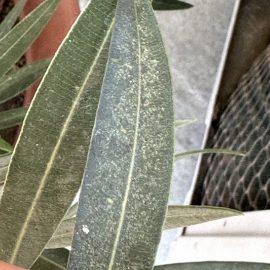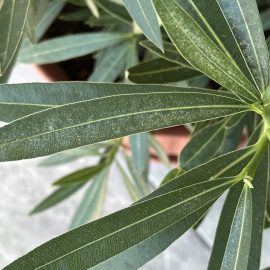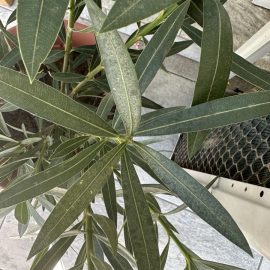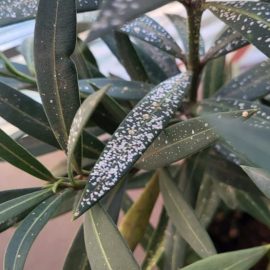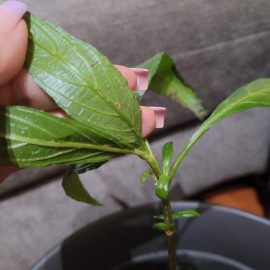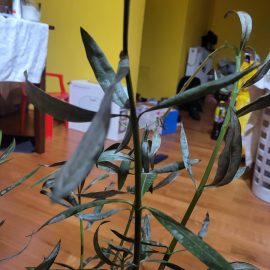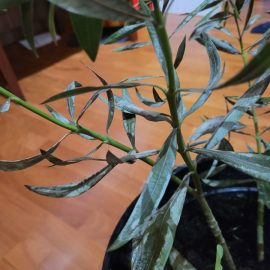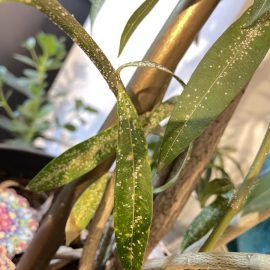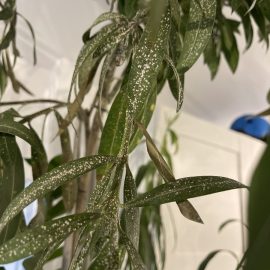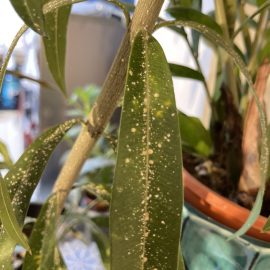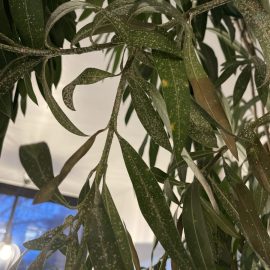Oleander, plant care and growing guide
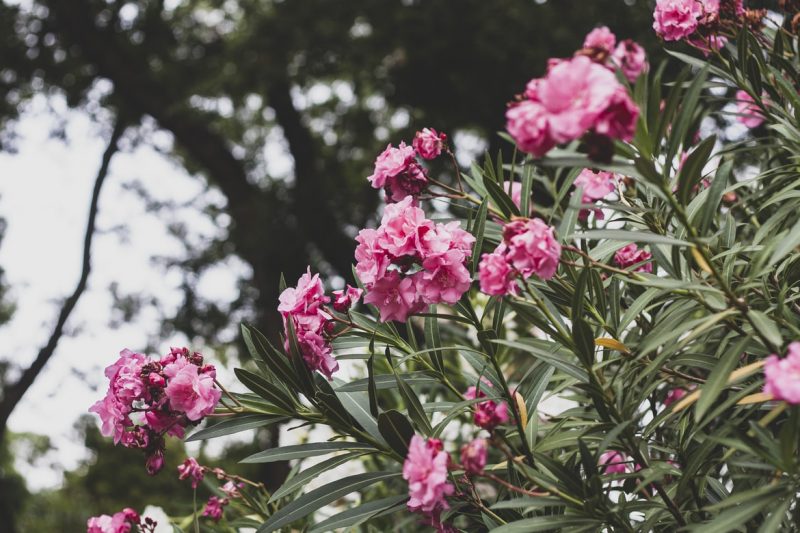
Oleander (Nerium oleander) is a shrub of Mediterranean origin, with evergreen leaves, cultivated especially for ornamental purposes. In the places of origin, it can reach 5-6 m, but in protected areas (greenhouses or indoors) it reaches a height of 1-2 m. The shoots are flexible and they arch easily. The leaves are lanceolate, dark green. Flowering takes place from June to October. The flowers appear at the top of the shoots, they are simple or double, and pleasantly fragrant.




Light. Oleander is a plant that loves light and the sun. In summer, the sun helps the plant grow properly. If the environmental factors are favorable (light, water, food), the plant can bloom all year round. It is recommended that it have a period of dormancy during the winter, the period in which it keeps its leaves, but it does not grow or bloom. Cool rooms (5-10º C) with medium to high brightness are the ideal places for the Leander to overwinter.
Watering. During the summer, the plant needs high humidity in the substrate. Oleander tolerates low atmospheric humidity well, but if it is placed in direct sunlight, it is still recommended that the plant be sprayed. In summer, watering should be done generously. In winter, water the plant less with water at room temperature.
Substrate. It needs a fertile substrate, which must allow easy drainage of the water.
Recommended products
-
You can find products on a different store
Change Store -
You can find products on a different store
Change Store -
You can find products on a different store
Change Store -
You can find products on a different store
Change Store -
You can find products on a different store
Change Store -
You can find products on a different store
Change Store -
You can find products on a different store
Change Store -
You can find products on a different store
Change Store -
You can find products on a different store
Change Store -
You can find products on a different store
Change Store -
You can find products on a different store
Change Store -
You can find products on a different store
Change Store -
You can find products on a different store
Change Store -
You can find products on a different store
Change Store -
You can find products on a different store
Change Store -
You can find products on a different store
Change Store -
You can find products on a different store
Change Store -
You can find products on a different store
Change Store -
You can find products on a different store
Change Store -
You can find products on a different store
Change Store -
You can find products on a different store
Change Store -
You can find products on a different store
Change Store -
You can find products on a different store
Change Store -
You can find products on a different store
Change Store
Pruning. Shape correction cuts should be done in autumn or spring, but only when necessary. After flowering, the shoots that have bloomed have to be cut to allow a new flowering. It is recommended to pinch the young plants for the formation of shoots.
Recommended products
-
You can find products on a different store
Change Store -
You can find products on a different store
Change Store -
You can find products on a different store
Change Store -
You can find products on a different store
Change Store -
You can find products on a different store
Change Store -
You can find products on a different store
Change Store -
You can find products on a different store
Change Store -
You can find products on a different store
Change Store -
You can find products on a different store
Change Store -
You can find products on a different store
Change Store -
You can find products on a different store
Change Store -
You can find products on a different store
Change Store -
You can find products on a different store
Change Store -
You can find products on a different store
Change Store -
You can find products on a different store
Change Store -
You can find products on a different store
Change Store -
You can find products on a different store
Change Store -
You can find products on a different store
Change Store -
You can find products on a different store
Change Store -
You can find products on a different store
Change Store -
You can find products on a different store
Change Store -
You can find products on a different store
Change Store -
You can find products on a different store
Change Store -
You can find products on a different store
Change Store
Fertilization. It should be done once a year with a slow-release fertilizer, applied to the surface layer of the substrate, or with a liquid fertilizer for flowering plants, between April and September.
Recommended products
-
You can find products on a different store
Change Store -
You can find products on a different store
Change Store -
You can find products on a different store
Change Store -
You can find products on a different store
Change Store -
You can find products on a different store
Change Store -
You can find products on a different store
Change Store -
You can find products on a different store
Change Store -
You can find products on a different store
Change Store -
You can find products on a different store
Change Store -
You can find products on a different store
Change Store -
You can find products on a different store
Change Store -
You can find products on a different store
Change Store -
You can find products on a different store
Change Store -
You can find products on a different store
Change Store -
You can find products on a different store
Change Store -
You can find products on a different store
Change Store -
You can find products on a different store
Change Store -
You can find products on a different store
Change Store -
You can find products on a different store
Change Store -
You can find products on a different store
Change Store -
You can find products on a different store
Change Store -
You can find products on a different store
Change Store -
You can find products on a different store
Change Store -
You can find products on a different store
Change Store
Repotting. It should be done only if the roots have occupied the entire pot. If not, every year, in April, the soil on the surface of the pot can be replaced with a fresh one. You should add fertile soil that has a good drainage capacity.
Propagation. Oleander is propagated through cuttings, in summer, in August, from the tops of semi-lignified shoots. They have to be rooted in vessels with water. Another propagation option is through cuttings obtained from fragments of shoots with two knots, which are then rooted in solid substrates (sand, peat, perlite, or mixture).
Oleander can also be propagated through layering, roots, or seeds.
Recommended products
-
You can find products on a different store
Change Store -
You can find products on a different store
Change Store -
You can find products on a different store
Change Store -
You can find products on a different store
Change Store -
You can find products on a different store
Change Store -
You can find products on a different store
Change Store -
You can find products on a different store
Change Store -
You can find products on a different store
Change Store -
You can find products on a different store
Change Store -
You can find products on a different store
Change Store -
You can find products on a different store
Change Store -
You can find products on a different store
Change Store -
You can find products on a different store
Change Store -
You can find products on a different store
Change Store -
You can find products on a different store
Change Store -
You can find products on a different store
Change Store -
You can find products on a different store
Change Store -
You can find products on a different store
Change Store -
You can find products on a different store
Change Store -
You can find products on a different store
Change Store -
You can find products on a different store
Change Store -
You can find products on a different store
Change Store -
You can find products on a different store
Change Store -
You can find products on a different store
Change Store
Diseases and pests
Infection with Septoria oleandrina
The attack manifests itself in the form of whitish spots, usually circular, whose diameter can reach up to 1-2 cm. Numerous black dots (the fungus’ pycnidia) can be seen on the surface of the spots.
Control: it is recommended to remove and destroy the attacked leaves and use a fungicide.
Regarding pests, oleander is frequently attacked by European fruit lecanium and woolly apple aphids.
The attack of these pests causes the weakening and drying of the plants. In addition, the presence of these pests on the plant favors the appearance of sooty mold (Capnodium salicinum). It manifests itself as a black, unsightly film on the surface of the leaves, preventing the efficient realization of the photosynthesis process.
The control of these pests is done through insecticide treatments. In the case of sooty mold, the leaves of the plant can initially be washed, and after they dry, an insecticide must be applied.














































































































































































































































































































































































































































